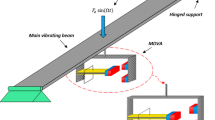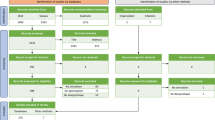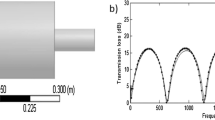Abstract
In the paper there is a problem of investigated bounded space with vibroacoustical source inside generating acoustic field. The first aspect of this work relates to the semi-analytical modelling of an acoustic field which is alternative to finite element method (FEM) or boundary element method (BEM). The second aspect is connected with minimization of significant factors number required to control of acoustic pressure level inside bounded space. Therefore it is assumed that room’s pressure distribution can be described by using modal analysis assumptions. Moreover, acoustic pressure represents the sum over a set of room’s eigenfunctions and time components, i.e. the modal amplitudes. Additional assumption of the highest values of impedance is made. As a result the modal coupling can be neglected. This approach results in the acoustic field model faster than alternative FEM or BEM models. Additionally, the influence of boundaries on the acoustic field is mathematically described. When the shape of bounded space is complicated and the boundaries vary in properties, huge number of experiments (simulations) should be conducted in order to estimate whether the boundaries significantly influence the acoustic filed or the influence can be neglected. By applying the Plackett–Burman or fractional factorial design the number of experiments can be reduced. In addition the statistical interpretation which uses \(t\)-test is applied. This statistical approach is required when full factorial design is not feasible.




Similar content being viewed by others
References
Kutruff H (2009) Room Acoustics, 5th edn. Taylor & Francis Group, New York
Rayna AL, Sancho J (1988) Technical note: the influence of a room shape on speech intelligibility in rooms with varying ambient noise levels. Noise Control Eng J 31:173–179
Cox TJ, D’Antonio P, Avis MR (2004) Room sizing and optimization at low frequencies. J Audio Eng Soc 52(6):640–651
Dühring MB, Jensen JS, Sigmund O (2008) Acoustic design by topology optimization. J Sound Vib 317:557–575
Zhu X, Zhu Z, Cheng J (2004) Using optimized surface modifications to improve low frequency response in a room. Appl Acoust 65:841–860
Wadbro E, Berggren M (2006) Topology optimization of an acoustic horn. Comput Methods Appl Mech Eng 196:420–436
Luo J, Gea HC (2003) Optimal stiffener design for interior sound reduction using a topology optimization based approach. J Vib Acoust 125:267–273
Blazejewski A, Krzyzynski T (2010) Multi-objective optimization of the acoustic impedance distribution for room steady state sound field condition. Vib Phys Syst 24:57–62
Blazejewski A, Krzyzynski T (2010) Application of genetic algorithms in mulhi-objective optimization in room acoustics. Logistyka 6:281–289
Smeyers-Verbeke J, Vandeginste BGM, Massart DL, Vander Heyden Y, Nijhuis A (2001) Guidance for robustness/ruggedness tests in method validation. J Pharm Biomed Anal 24:723–753
Dejaegher B, Capron X, Smeyers-Verbeke J, Vander Heyden Y (2006) Randomization tests to identify significant effects in experimental designs for robustness testing. Anal Chim Acta 564:184–200
Dong F (1993) On the identification of active contrasts in unreplicated fractional factorials. Stat Sin 3:209–217
Mason RL, Gunst RF, Hess JL (2003) Statistical Design and Analysis of Experiments, 2nd edn. Wiley, New Jersey
Acknowledgments
Several aspects of the paper have been presented during 12th Conference on Dynamical Systems - Theory and Applications.
Author information
Authors and Affiliations
Corresponding author
Rights and permissions
About this article
Cite this article
Blazejewski, A. Modal approach application and significance analysis inside bounded space in a steady state acoustic field condition. Int. J. Dynam. Control 3, 50–57 (2015). https://doi.org/10.1007/s40435-014-0066-9
Received:
Revised:
Accepted:
Published:
Issue Date:
DOI: https://doi.org/10.1007/s40435-014-0066-9




